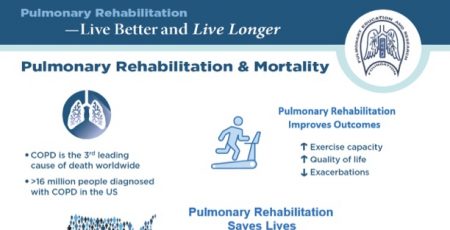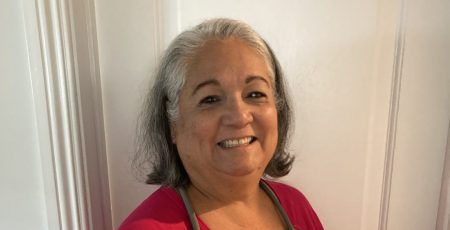10 Dec Flying Over the Holidays? You May Need Supplemental Oxygen
You probably already know that, if you travel by airplane, you’ll experience some decrease in air pressure and lower than normal oxygen levels, but do you know by how much? The United States Federal Aviation Administration (FAA) requires that the cabin pressure on commercial airplanes be maintained at levels equivalent to the atmospheric pressure below 8,000 feet above sea level. However, in some circumstances, such as when the pilot must take the airplane to higher than normal altitudes in order to avoid bad weather, air pressure could drop to a level equivalent to the atmospheric pressure at 10,000 feet. This could put you at risk if you have COPD, because as air pressure drops, so does the pressure of oxygen in the air. At 10,000 feet it is roughly 1/3 less than the normal pressure of oxygen.
For those without COPD, the decreased oxygen tension levels generally are not noticeable. But for up to 80 percent of COPD sufferers, the effect can be serious enough to cause low oxygen levels even at rest or with modest exertion, such as walking to the lavatory.
For this reason, you may need oxygen supplementation in-flight even if you don’t use oxygen in your day-to-day life. Consult with your doctor well ahead of your travel dates. He or she may want to measure your blood oxygen level using a finger oximeter or by obtaining an arterial blood sample. You may also have your lung function tested under conditions simulating flight such as by having you breathe a gas mixture with lower than normal levels of oxygen, or tested in a special chamber where air pressure is lowered to levels typically experienced during commercial flights. Based on the results of these or similar tests, it might be recommended that you have supplemental oxygen for your flights.
You may find more information on how to determine if you will need supplemental oxygen when flying, in an informative article on Up To Date, an online evidence-based, physician-authored clinical decision support resource.
See our post next week on “What to Know When Traveling With Portable Oxygen.”





Kay N. DuVal
Posted at 14:30h, 05 SeptemberFor the past year, I have been using a cpap during the night because my blood oxygen drops while I’m sleeping. (I don’t know the readings without cpap during my initial sleep study. Overnight readings have since been taken with the cpap, but I know that without the machine my blood drops to 87-88, according to my own oximeter readings.) I don’t need anything during the day. Last summer I used a portable oxygen concentrator at night when we were in the Canadian Rockies, but it does not give the continuous help that cpap does. This summer we cancelled a research trip to the Pyrenees because of low oxygen fears, but we would like to make the trip next summer. I will take the cpap for nighttime, but should I make plans for oxygen help if the altitude becomes a problem? We will mostly be driving, not hiking. (I’ve been in the Pyrenees in the past without breathing problems, but it has been several years.) My durable equipment people say sometimes people traveling in high altitude buy something like what SCUBA divers use, buying it at their travel destination, avoiding airplane complications. Any advice would be appreciated. Thank you, Kay DuVal
PERF
Posted at 09:00h, 09 SeptemberDear Kay,
How wise you are to investigate this now rather than waiting until a week or two before you leave! Your problem is not a common one and not one I have run into before. At least 15 years ago one of the respiratory therapists I know in Japan told me how he accompanied Sumo wrestlers on all their flights in order to mange their CPAPs. As you may know these Sumo wrestlers often weigh more than 500 pounds and without this help could suffocate while they were sleeping, especially at altitude. The policy of the airlines on use of oxygen, or or a CPAP, varies and is a question you would need to address with the airline on which you plan to fly. The length of the flight is another factor to be taken into consideration. Planes going overseas usually fly part of the time pressurized to 8,000 ft or less.
You will also need to find the altitudes at which you will be doing your research in the Pyrenees. They range to a height of over 11,000 feet, as you probably know. The length of time you will be at various altitudes is also a factor. I would strongly recommend that you take your oximeter with you, so you can monitor your oxygen saturation and titrate your oxygen as necessary with the permission of your pulmonologist. You might consider asking your pulmonologist whether you would benefit from using oxygen with a conserving device and a special nasal cannula. An example is the Oxymizer, which was developed by our Board member Dr. Brian Tiep (https://www.vitalitymedical.com/pdf/oxymizer-conserver-cannula.pdf). Dr. Tiep is internationally known in this field. However, he warns us that a conserving device is of no use for oxygen with a CPAP.
Working out a system to purchasing oxygen at your destination is certainly sensible, in case you run into problems. Perhaps you can ask your oxygen provider to find the location of oxygen providers and medical facilities along your route.
After you have your basic information make an appointment with your pulmonologist. While your physician can’t give you final information so far in advance, he will be able to give you an idea of what your needs might be and how far in advance of your trip you need further testing and advice.
As I am sure you know, you should take along copies of your medical history, physical exams, x-ray reports, arterial blood gasses and oxygen prescriptions as well as information from your sleep studies. These days it is so much easier to do this when it can be stored digitally. To be safe, I’d be over cautious and also take along paper copies of some of this, most especially duplicates of your oxygen prescription. If you have questions after discussing all this with your pulmonologist, we’d be glad to try to help further with the assistance of Dr. Tiep. In a month or two we will have some articles on oxygen on our new website that may have more information for you.
This sounds like a lot of trouble, but for your safety, planing ahead for such a wonderful trip is necessary. Please keep us posted on how you do! We will be interested!
Best wishes,
Mary Burns RN, BS